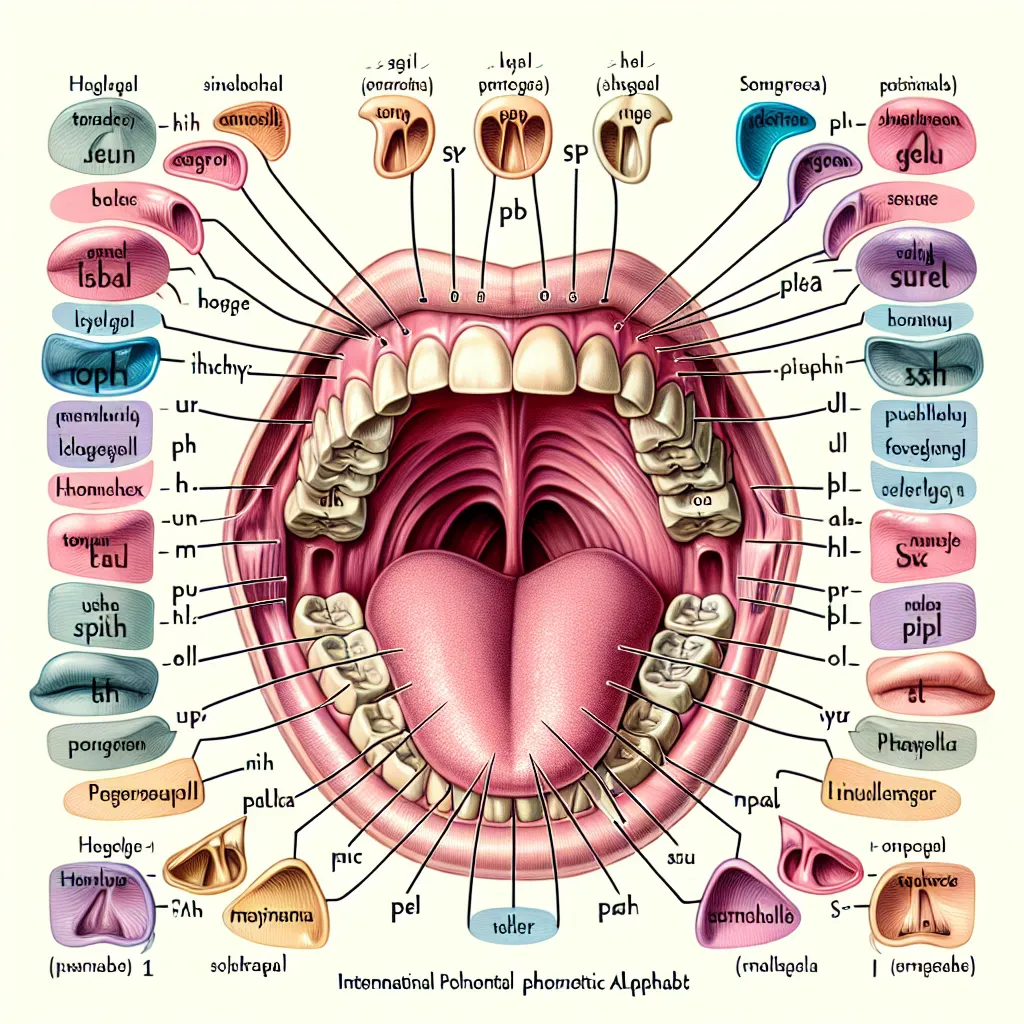Are you struggling to pronounce English words correctly? Do you find it challenging to make certain sounds that don’t exist in your native language? If so, you’re not alone. Many English learners face difficulties with pronunciation, but there’s good news: by focusing on tongue placement, you can significantly improve your pronunciation skills. In this comprehensive guide, we’ll explore how to use tongue placement effectively to enhance your English pronunciation.
Understanding the Importance of Tongue Placement in Pronunciation
Tongue placement is a crucial aspect of pronunciation that often gets overlooked. The position of your tongue in your mouth can dramatically affect the sounds you produce. Different tongue positions create different resonances and air flows, resulting in distinct phonemes (sound units) in English.
The Basics of Tongue Placement
To understand tongue placement, it’s essential to know the basic areas of the mouth:
- Front of the mouth (near the teeth)
- Middle of the mouth (the hard palate)
- Back of the mouth (the soft palate)
- The tip, blade, and back of the tongue
Each sound in English requires a specific tongue position. For example, the ‘th’ sound in ‘think’ involves placing the tip of your tongue between your teeth, while the ‘k’ sound in ‘cat’ requires the back of your tongue to touch the soft palate.
 Tongue placement diagram for English sounds
Tongue placement diagram for English sounds
Why Tongue Placement Matters
Proper tongue placement is essential for several reasons:
- Clarity: Correct placement ensures that sounds are distinct and easily understood.
- Accent reduction: It helps in producing sounds that may not exist in your native language.
- Fluency: With practice, proper tongue placement becomes automatic, improving overall fluency.
Techniques for Improving Pronunciation Through Tongue Placement
Now that we understand the importance of tongue placement, let’s explore some techniques to improve your pronunciation.
1. Mirror Exercises
One of the most effective ways to practice tongue placement is by using a mirror. This technique allows you to visually check your tongue position.
Steps:
- Stand in front of a mirror.
- Open your mouth wide.
- Practice moving your tongue to different positions (front, middle, back).
- Observe how these movements change the shape of your mouth.
2. Tongue Twisters
Tongue twisters are not just fun; they’re excellent tools for practicing specific sounds and tongue movements.
Examples:
- “She sells seashells by the seashore” (for ‘s’ and ‘sh’ sounds)
- “How much wood would a woodchuck chuck if a woodchuck could chuck wood?” (for ‘w’ and ‘ch’ sounds)
Practice these slowly at first, focusing on the correct tongue placement for each sound.
3. Minimal Pair Practice
Minimal pairs are words that differ by only one sound. Practicing these can help you distinguish between similar sounds and improve your tongue placement.
Examples:
- “Ship” vs. “Sheep” (for short ‘i’ and long ‘ee’ sounds)
- “Think” vs. “Sink” (for ‘th’ and ‘s’ sounds)
4. Phonetic Transcription Study
Learning the International Phonetic Alphabet (IPA) can greatly aid in understanding tongue placement. Each symbol in the IPA represents a specific sound and can guide you on how to position your tongue.
 International Phonetic Alphabet chart
International Phonetic Alphabet chart
For more in-depth techniques on improving your overall pronunciation, check out our article on best techniques for accurate English pronunciation.
Common Pronunciation Errors Related to Tongue Placement
Understanding common errors can help you avoid them. Here are some frequent mistakes related to tongue placement:
- Th-fronting: Replacing ‘th’ with ‘f’ or ‘v’ (e.g., “fink” instead of “think”)
- L-vocalization: Not raising the tip of the tongue for the ‘l’ sound (e.g., “taboo” instead of “table”)
- R-sound errors: Improper tongue position for the ‘r’ sound, common for speakers of languages without this phoneme
To address these and other pronunciation challenges, you might find our guide on pronunciation strategies for better English speaking helpful.
The Phonemic Chart and Commonly Mispronounced Words
Understanding the phonemic chart is crucial for mastering tongue placement. Here’s a simplified version focusing on consonants:
- Bilabial: /p/, /b/, /m/
- Labiodental: /f/, /v/
- Dental: /θ/, /ð/
- Alveolar: /t/, /d/, /n/, /s/, /z/, /l/
- Post-alveolar: /ʃ/, /ʒ/, /tʃ/, /dʒ/, /r/
- Palatal: /j/
- Velar: /k/, /g/, /ŋ/
- Glottal: /h/
Now, let’s look at 10 commonly mispronounced words related to tongue placement:
- Clothes (/kloʊðz/, not /kloʊz/)
- Sixth (/sɪksθ/, not /sɪks/)
- Months (/mʌnθs/, not /mʌns/)
- Asked (/æskt/, not /æst/)
- Rhythm (/ˈrɪðəm/, not /ˈrɪðm/)
- Squirrel (/ˈskwɜːrəl/, not /ˈskwɪrəl/)
- Wednesday (/ˈwɛnzdeɪ/, not /ˈwɛdnɛsdeɪ/)
- Sword (/sɔːrd/, not /swɔːrd/)
- Colonel (/ˈkɜːrnəl/, not /ˈkɒlənəl/)
- Comfortable (/ˈkʌmftəbəl/, not /ˈkʌmfɔːrtəbəl/)
For each of these words, pay close attention to the tongue placement for each sound. Practice in front of a mirror and use the phonetic transcriptions as a guide.
Conclusion
Improving your pronunciation through tongue placement is a journey that requires patience and consistent practice. Remember, the key is to be aware of your tongue position and to practice regularly. Start with simple exercises and gradually move to more complex ones. Don’t be afraid to exaggerate movements at first – this can help you feel the correct positions more clearly.
For additional support, consider using mouth exercises for pronunciation to strengthen the muscles involved in speech. And if possible, try to practice pronunciation with native speaker feedback for personalized guidance.
With dedication and the right techniques, you can significantly improve your English pronunciation. Keep practicing, stay patient, and most importantly, enjoy the process of learning. Your efforts will pay off, leading to clearer, more confident English communication.
We’d love to hear about your experiences with improving pronunciation through tongue placement. Share your thoughts and questions in the comments below, and don’t forget to explore our other pronunciation tips for effective English communication for more helpful advice.




